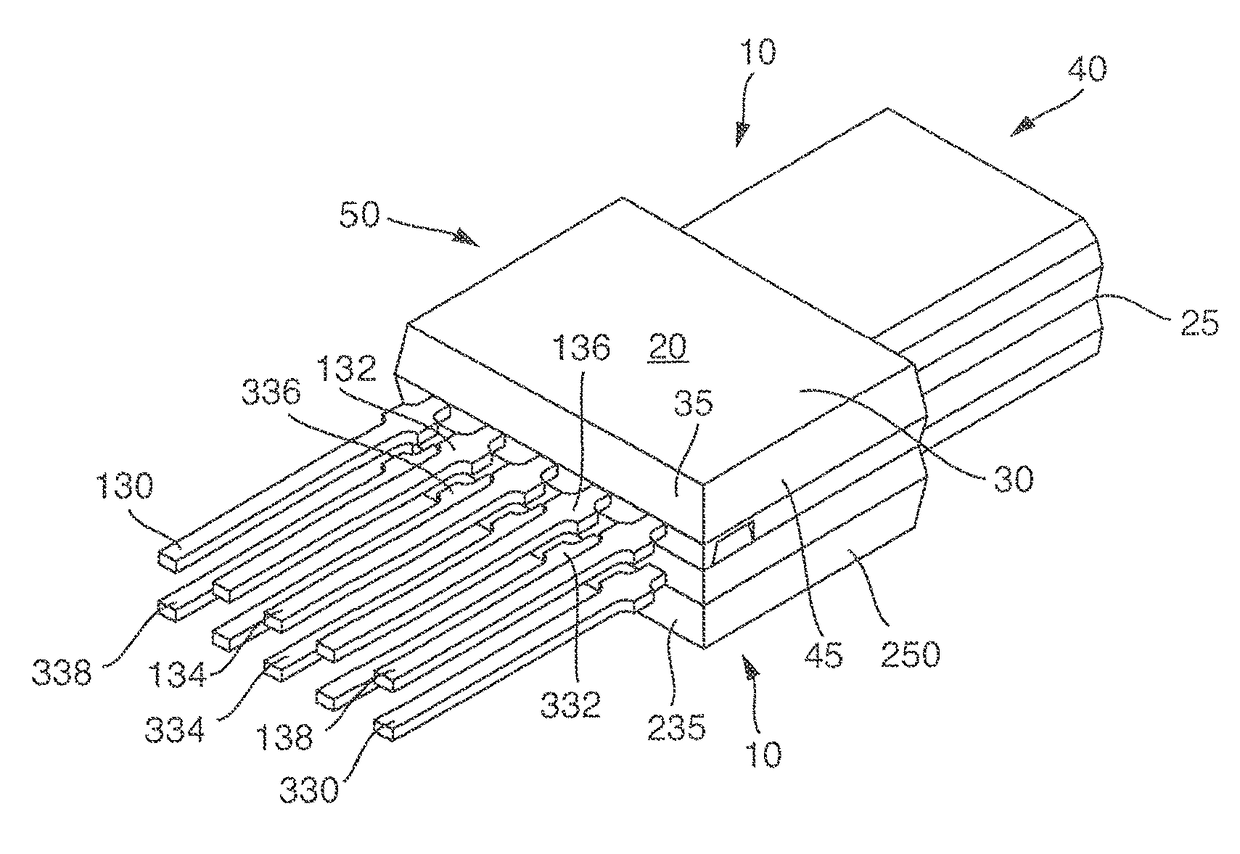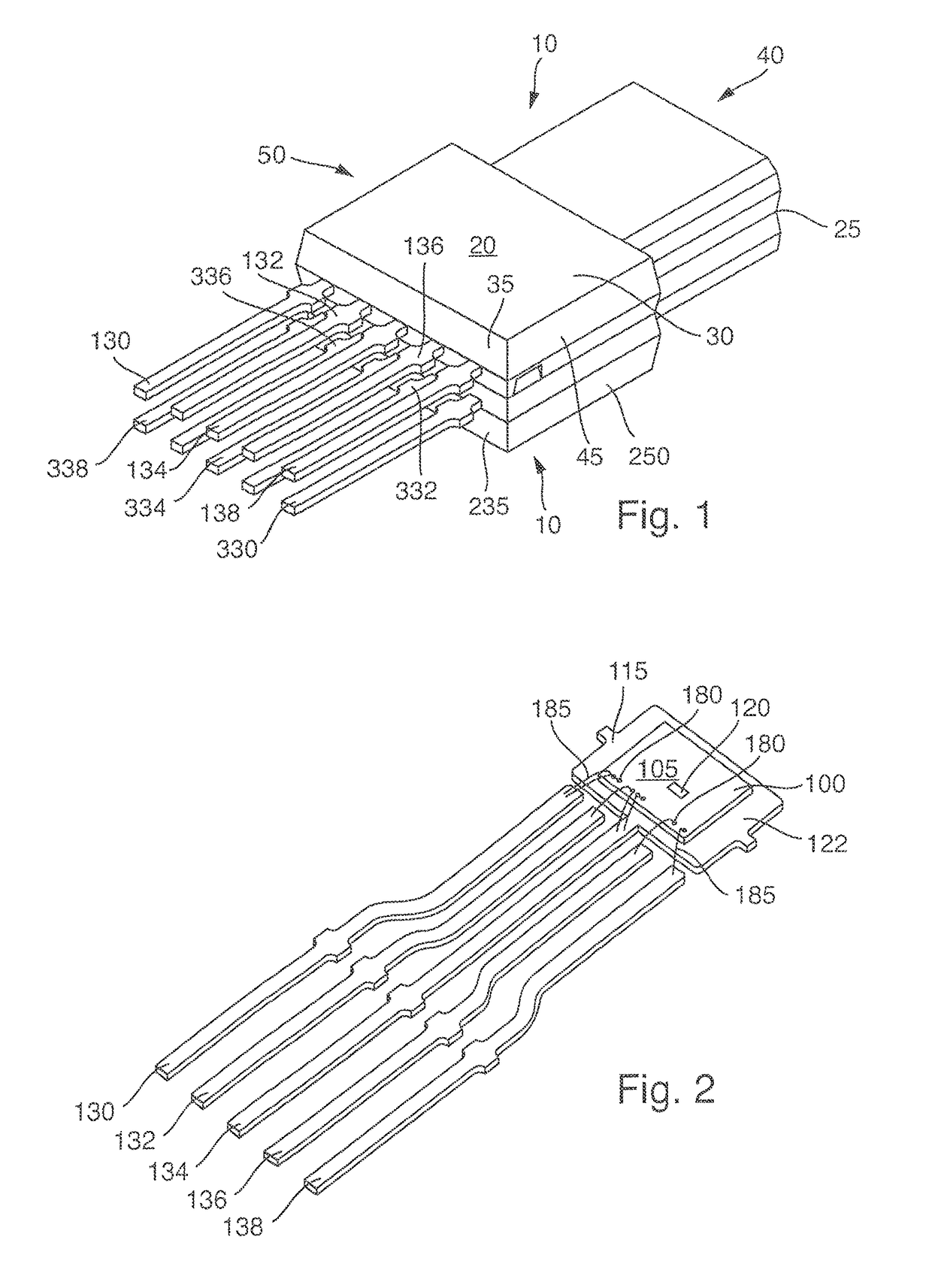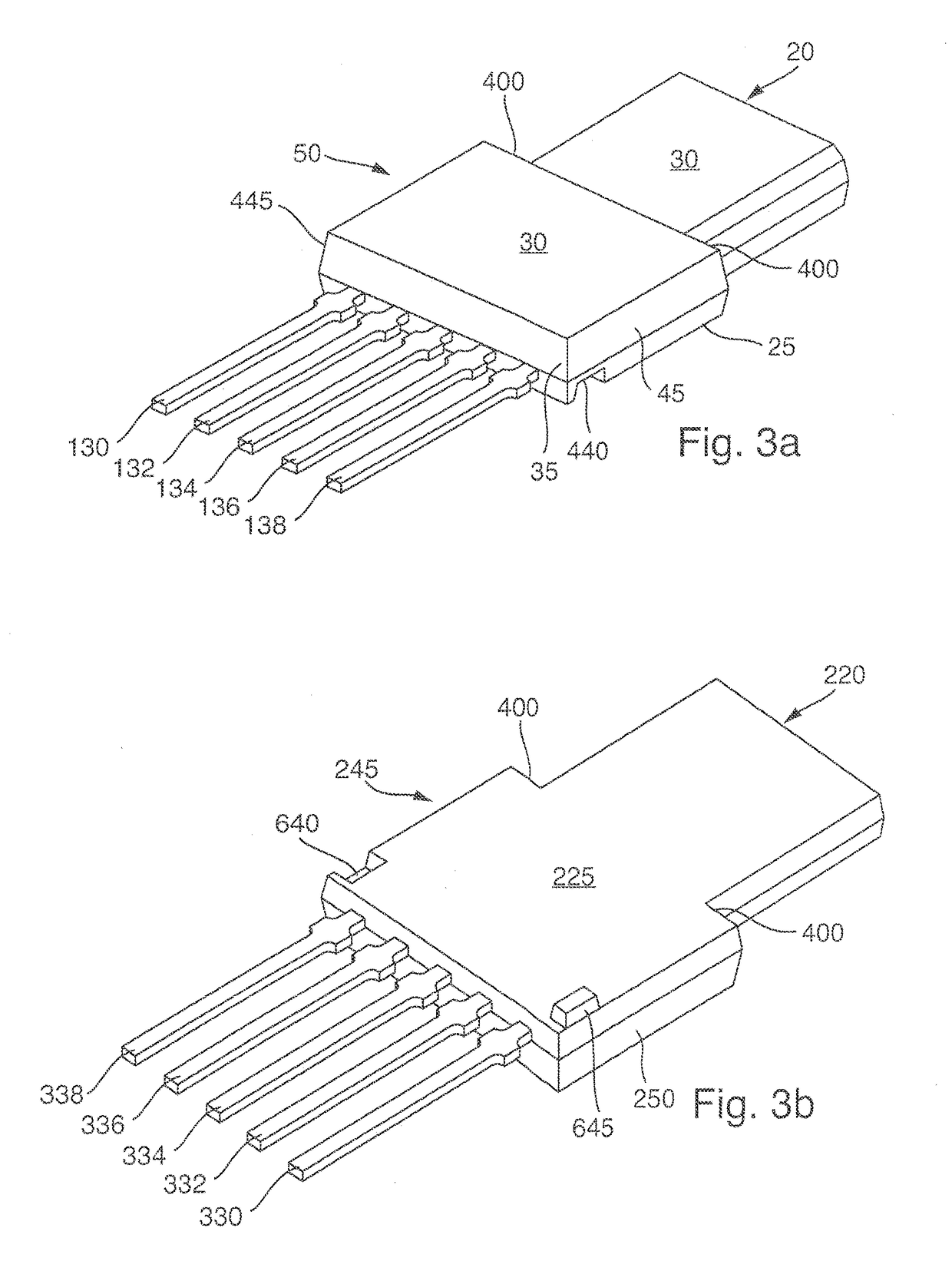Sensor device
a sensor device and sensor technology, applied in the field of sensor devices, can solve the problems of high failure safety of module-like sensor devices
- Summary
- Abstract
- Description
- Claims
- Application Information
AI Technical Summary
Benefits of technology
Problems solved by technology
Method used
Image
Examples
first embodiment
[0026]The illustration in FIG. 1 shows a view of the invention of a sensor device 10 formed as a module, having a first housing 20 and a second housing 220. It is understood that the outer dimensions of first housing 20 are preferably substantially identical, most preferably exactly identical to the outer dimensions of second housing 220. In the present case, two housings 20 and 220 are joined to form the module.
[0027]First housing 20 has a bottom side 25 and a top side 30. A face side 35 and a back side 40 and a first side surface 45 and a second side surface 50 are arranged between top side 30 and bottom side 25. Further, second housing 220 has a bottom side 225 and a top side 230. A face side 235 and a back side 240 and a first side surface 245 and a second side surface 250 are arranged between top side 230 and bottom side 225. In the present case, back side 40 of first housing 20 is connected force-fittingly to back side 240 of second housing 220 to form a module.
[0028]Stepped f...
second embodiment
[0040]In the illustration of FIG. 5, a perspective view of the first housing and second housing are shown in which bottom side of the first housing is joined to the top side of the second housing. Only the differences relative to the illustration of the previous figures will be explained below. Rectangular elevations and depressions 740, 745, 840, and 845, arranged on the respective bottom sides 25 and 225 of first housing 20 and of second housing 220. On the respective top sides 30 and 230 rectangular depressions 940 and 945 are arranged. During the joining process the rectangular elevations 740 and 745 engage form-fittingly with the rectangular depressions 940 and 945 and form a centering aid, so that the two housings 20 and 220 are positioned precisely one over the other. Stepped formations 400 are formed in each case only on both side surfaces 45 and 50 of first housing 20 and on both side surfaces 245 and 250 of second housing 220. As a result, the module has larger outer dimen...
PUM
 Login to View More
Login to View More Abstract
Description
Claims
Application Information
 Login to View More
Login to View More - R&D
- Intellectual Property
- Life Sciences
- Materials
- Tech Scout
- Unparalleled Data Quality
- Higher Quality Content
- 60% Fewer Hallucinations
Browse by: Latest US Patents, China's latest patents, Technical Efficacy Thesaurus, Application Domain, Technology Topic, Popular Technical Reports.
© 2025 PatSnap. All rights reserved.Legal|Privacy policy|Modern Slavery Act Transparency Statement|Sitemap|About US| Contact US: help@patsnap.com



